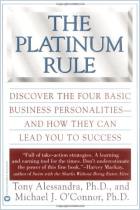People disagree because they have different ways of thinking, communicating, handling stress and dealing with problems. Communications experts Robert Bolton and Dorothy Grover Bolton show you how to improve your relationships. They offer a “people styles model” that identifies people according to their levels of assertiveness and responsiveness, and that explains the characteristics of each style. Understanding these styles could help you work around people with difficult personality traits and anticipate their behavior. This practical, if not terribly innovative, manual offers insights into human nature that you can apply in your professional and personal life. getAbstract recommends this insightful guidebook to managers, supervisors and anyone who has issues with people – that is, everybody.
People Problems
Everyone thinks, makes decisions, handles emotions, manages stress and deals with conflict differently. That is to be expected. However, some individual behavioral patterns can make it more difficult to build rapport, persuade others and communicate.
“Understanding Yourself and Others”
Humans divide into four different “people styles.” No single style is superior or inferior, and no style predicts success or failure. Using the “people styles model” allows you to consider probabilities; people are usually predictable, but not always. This model is based on industrial psychologist David Merrill’s research about behavioral differences in the early 1960s.
Observing individual degrees of assertiveness and responsiveness is useful for identifying people’s styles because these traits are pervasive and enduring.
Assertive Characteristics
Assertiveness is how much other people are likely to see someone’s behavior “as being forceful or directive.” Think of assertiveness as a continuum – half the population will be less assertive and half the population will be more assertive. While you may associate assertiveness with aggression...
Robert Bolton and Dorothy Grover Bolton co-founded Ridge Associates, a company specializing in leadership development, performance management, people skills training and interpersonal communication.






















Comment on this summary